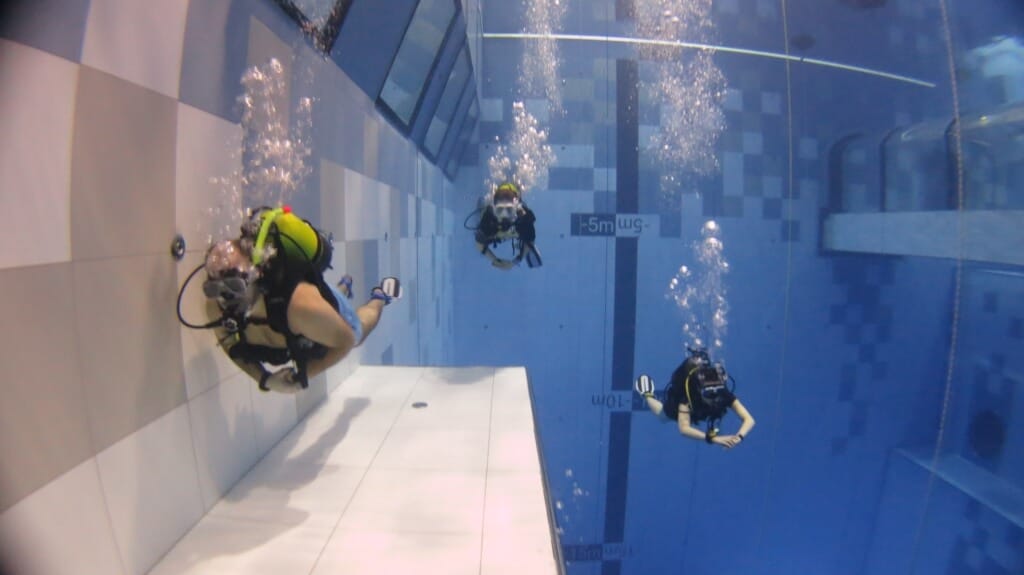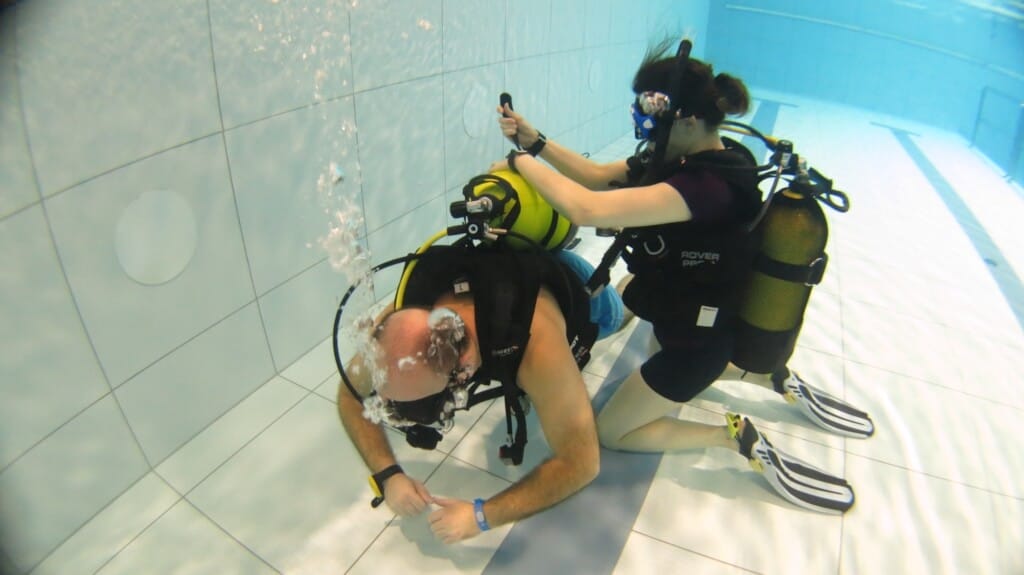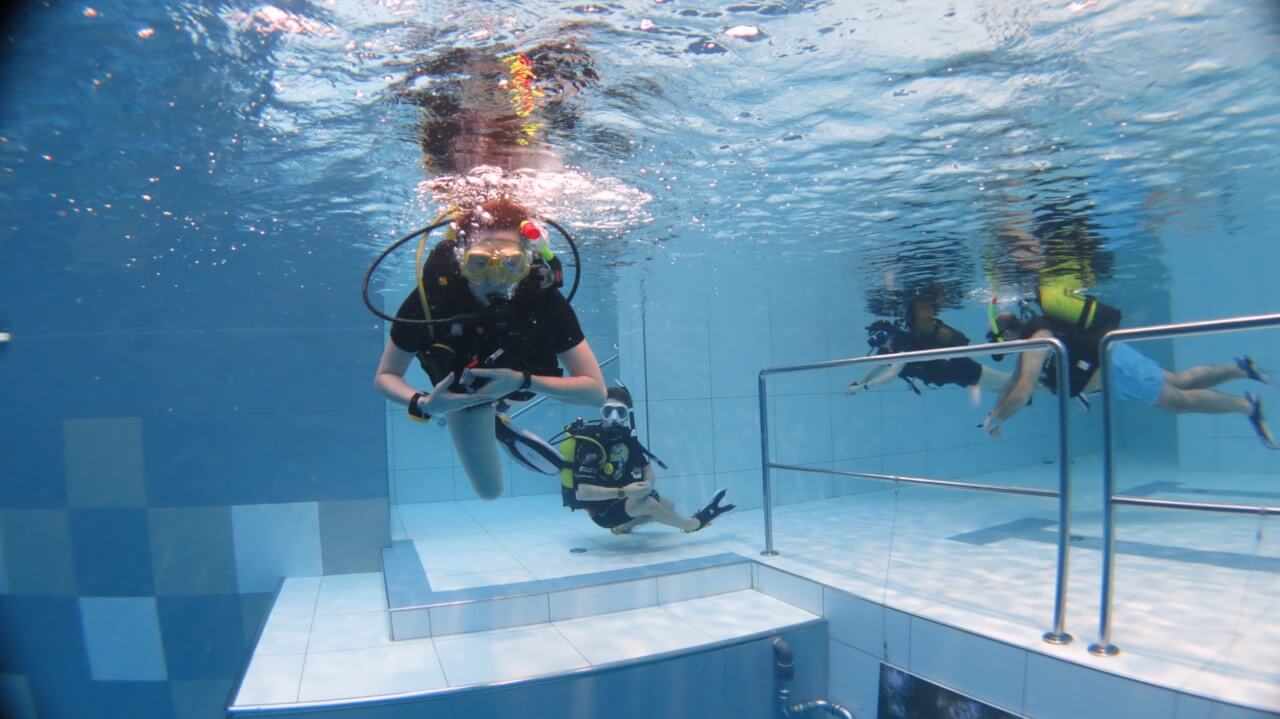When I think about the safety of diving in Deepspot, the first thing that can be noted is that diving in Deepspot is simply safe, and that is one truth. On the other hand, the same safety rules apply to diving in Deepspot as when diving elsewhere. The safety of diving in Deepspot can first be looked at through what we can learn, which will then ensure our safety in open water.
Deepspot is a great place to practice diving skills in a safe way.
The second approach to diving safety in Deepspot is to assess what rules come easier for divers there to disregard, due to the comfortable conditions. That is, because it is safe it can be risky.
How will Deepspot keep us safe for the future?
Diving in Deepspot from the point of view of later dives (in other / changing conditions) provides us with increased safety due to the fact that we do not have to have as long dive breaks. We can dive regardless of the season and weather training skills that will later come in handy during diving expeditions. Swimming techniques, selection and use of equipment, cooperation with a partner, buoyancy – including control of a calm ascent – are all skills that are very well practiced at Deepspot and that can pay off in increased safety on future dives.
Deepspot also provides us with the opportunity to learn more about and select diving equipment. There is also time in Deepspot to calmly select, prepare, assemble the equipment we will need during the dive. This experience in future dives will pay off with the ability to properly select equipment and assemble it before diving in more challenging conditions. Often in dive bases there is less space, less time before the dive, there is not as much availability of sizes as in Deepspot and we have to prepare for the dive with this equipment after all. In Deepspot, thanks to the fact that we have plenty of time before the dive, equipment is available in a wide range of sizes, we can choose the right equipment. We can also test the equipment that suits us better i.e. jacket or wing, single cylinder or dual cylinder system such as twin or sidmount.
Diving safety comes mainly from sticking to procedures and skills, but a good choice of equipment including sizing and assembling it correctly also has a big impact on safety.

How to dive safely in Deepspot?
The safety of diving in the Deep spot is to not succumb to the drenching amazing conditions of diving here due to the beautiful clarity and temperature of the water. Diving seems very easy which can expose us to the ill-considered decision to behave a little more risky or not follow basic procedures.
The main risk of diving in Deepspot is related to the fact that it is quite easy to make depth there and it is tempting to stay longer at medium or greater depths so it is a risk associated with exposure to nitrogen saturation that is, exposure to decompression sickness. Therefore, when diving in Deepspot, it is all the more important to perform deep feet and safety stops. J
In conditions of warm water and incredible 40-meter clarity, it may seem that precise adherence to the rules of no-decompression diving, i.e. ascending at a slow pace, and performing safety stops, is not so important. However, precisely because the average depths of a dive can be quite high, performing safety stops and a slow ascent is even more important than during a typical lake or sea dive, where the dive is shallow for much of its duration.
The typical course of a dive in Deepspot is to descend to the platforms at medium depth and swim around the objects on the bottom, then often continued or preceded by a descent to the tube at a depth of 30 meters or more, then there is a swim through the next levels of caves which extends the stay to quite a depth of 20-15 meters. The divers then swim again in the main basin at around 15-20 meters and then only surface. Unfortunately, this final ascent is often quite rapid. In Deepspot, you have to be even more vigilant about the 10 m/min ascent speed and the execution of the deepstops and safety stops shown by the computer.

That is, some of the risk of diving in Deeppsot is underestimating the depth due to comfortable conditions
A diver thinking about diving in Deepspot thinks “well, because what can happen in a pool”, the conditions are ideal, the water is warm, the clarity is beautiful, so divers stay a little longer deeper less often check their air reserve, there is less communication in a pair or dive group and during ascent it is tempting to just finish the dive faster – just surface. It’s a good thing that Deepspot, because of the conditions, forgives a lot of mistakes such as breathing too fast (nervous) – the chance of freezing the automaton is none – in such warm water. Poor guarding with a partner with such transparency forgives mistakes – it’s hard to get lost. But Deepspot does not forgive one important thing, which is exposure to inert gases (tops), which is simply to saturate yourself with nitrogen during the dive. Deep breathing high nitrogen vapor at higher ambient pressure is the same at 30 meters in Deepspot; as at 30 meters in Egypt or 30 meters in a typical lake.
Thus, one should stick to rules such as:
- To stay close to partners
- Check air pressure regularly
- Start ascent early enough to have time to perform deepstops and a safety stop and ascend with a reserve of 50 atmospheres











